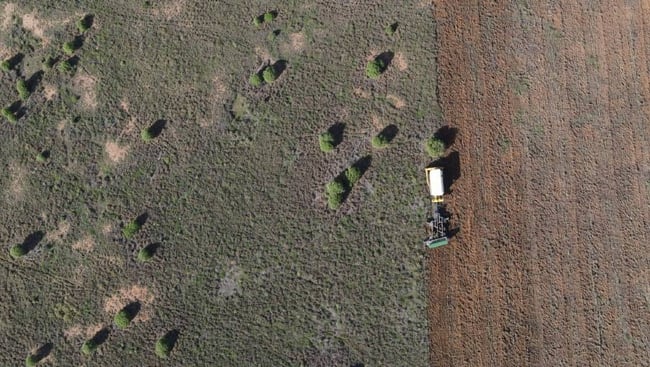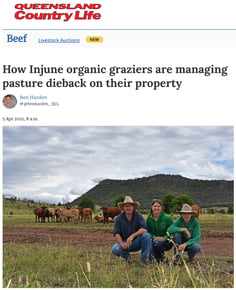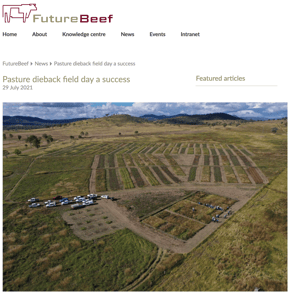CONTACT US: 1300 979 395

BEATING PASTURE DIEBACK WITH PROGARDES®:
A CASE STUDY
The problem:
Livestock naturally avoids grazing on dieback affected grasses, so the condition can drastically affect productivity.
Like so many graziers across Queensland and Northern New South Wales, Brigid and Owen Price have experienced first-hand the devastating effects of pasture dieback. With up to 1,500 hectares of their 21,000ha operation badly affected, they set out to develop a management plan to reduce the impacts.

ABOVE: The Prices run offsets across areas of pasture dieback in preparation for planting Progardes® Desmanthus. (Photo: Rob Price)
How Progardes® Desmanthus became part of the solution:
Dieback only affects summer growing grass species such as Buffel and broad leaf paspalum, with legumes and some other semi-broad leaf species unaffected.
The Price's produce organic beef, so introducing Progardes® Desmanthus to improve pasture quality and provide a palatable feed source was the ideal, natural solution.
Other Benefits of Progardes® Desmanthus:
- Thrives in both alkaline and neutral clay-rich soils and adapts to all sorts of harsh conditions
- Easy to establish
- Long-term persistent and drought tolerant
- Contributes to building soil nitrogen
- Highly palatable - livestock actively seek it out
- Has a high protein content which noticeably improves animal live weight gain
Read More About the Price's Story:
Queensland Country Life (APR 2021): "How Injune organic graziers are managing pasture dieback on their property"
"For larger areas, re-seeding the area with a suitable legume, or maybe a less susceptible grass species, can significantly speed up the process of restoring productivity."
STUART BUCK
SENIOR AGRONOMIST, DEPARTMENT OF AGRICULTURE & FISHERIES
How to recognise pasture dieback:
Pasture dieback generally starts presenting as patches in otherwise healthy-looking pastures. Meat and Livestock Australia have identified the following symptoms for producers to be on the look-out for:
- vivid yellowing, reddening or bronzing of the leaves, starting from the tip and progressing down towards the ligule (the symptoms develop first on the oldest leaves, but eventually spread to the whole plant)
- reduction in the root system and grass density
- plants that become unthrifty and eventually die
- pastures that become grey and disintegrate once dead
- cattle avoiding affected plants
Useful Resources:
Meat & Livestock Australia "Pasture Dieback: A Management Guide for Producers & Agronomists"

